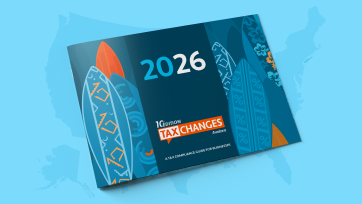California’s new sales tax law is catching local wineries by surprise
May 31, 2019 is the first filing due date for the new California sales tax requirements. Are you prepared?
For most California wineries, home state sales via the tasting room, wine club and wholesale sales generate the largest portion of income for the winery. With the passage of AB-147, if these combined sales channels, as well as all other DTC and retail sales, generated more than $500,000 in sales during the current or previous calendar year, the business has nexus throughout the entire state as of April 1, 2019 and therefore must collect and remit local taxes for California shipments.
Revised nexus in AB-147
The changes resulting from the newly approved AB-147 simplify activities for seller and state to track and report when compared to the original South Dakota v. Wayfair Inc., requirements.
Notable changes from AB-147:
- Modification of the definition(s) for “marketplace facilitator”, “delivery network company”, “related parties” and “engaged in business”. These changes affect several nexus triggers.
- Change of the sales threshold to $500,000 or greater (in previous or current calendar year), compared to the $100,000 specified in South Dakota v. Wayfair, Inc. (2018).
- Elimination of the 200 sales transactional threshold to achieve nexus.
- Elimination of district tax economic nexus; any remote seller that surpasses the $500,000 threshold in the state of California is required by all districts to collect and remit all applicable district use taxes.
- All retailers, including home state sellers, are required to be registered with the CDTFA and collect and remit to the CDTFA any applicable district taxes on all sales made for delivery in any district that imposes a district tax if, in the preceding or current calendar year, the total combined sales in California or for delivery in California by a retailer exceed $500,000. (Special Notice, April 2019)
- Requirement that marketplace facilitators who surpass the $500,000 threshold to register with the department and collect and remit sales tax on behalf of marketplace sellers in California starting October 1, 2019.
A winery with nexus in California, physical or economic, will now need to calculate and remit taxes based on the location where the purchaser takes possession of the product (i.e. where the product is delivered). All businesses with nexus in California, including wineries based in the state, need to continue to calculate, collect, report, and remit district and statewide taxes on all sales. This includes all wine club shipments and online sales within the state of California. The calculation, collection, reporting, and remittance of district taxes is to be based on the district in which the recipient is located, not the billing address of the customer.
All wineries based in California have been required to collect and remit California state sales tax (currently 7.25%, with a state rate of 6% and a mandatory local rate of 1.25%). This requirement does not change with AB-147. However, if a California home state business has wholesale, DTC, retail, and tasting room sales within the state totaling over $500,000, the business is required to collect and remit all applicable district taxes in addition to the state sales tax of 7.25%. The district tax rates range from 0.15% to 3% and can be found here.
For Avalara for Beverage Alcohol customers with California as your home state, our system can help you calculate the correct district and statewide tax rates for all your DTC shipments. we have enabled our system to calculate the correct tax rate for all your DTC shipments. We understand this is only one component of your tax reporting obligations and are available to discuss how to use the data for your monthly or quarterly reporting.
Learn more about Avalara's Beverage Alcohol solution here.

Avalara Tax Changes 2026 is here
The 10th edition of our annual report engagingly breaks down key policies related to sales tax, tariffs, and VAT.
Stay up to date
Sign up for our free newsletter and stay up to date with the latest tax news.














